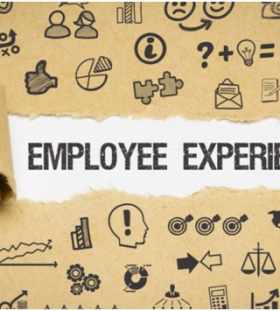8 HR Problems and How to Overcome Them
this fast-paced, digitally-driven work environment, the HR department’s continuously strives to evolve.
Today’s workforce is becoming more dynamic and complex. Conventional methods are no longer useful.
Every organization aims to identify, attract, develop, and retain talent in more efficient ways. With so many competitions around, businesses need to step up with their HR operations to attract the right skills.
Each of the companies faces a distinct set of challenges. But typically, these issues come in the form of universal HR problems and solutions. So why more and more companies are adopting HR software to overcome their challenges and provide a positive work environment for their employees.
Let’s look at these top eight challenges and problems faced by today’s HR department’s and discuss how you can solve them.
Table of Contents
1. Finding the Right Talent Within Budget and Specified time
One of the HR department’s biggest challenges is that they cannot find the right match for the job openings. More than two-thirds of surveyed companies revealed that they have a difficult time recruiting for open positions.

There are many reasons why. Today’s millennials workforce is restless, and so they don’t stay in a single company for more than two to three years. Besides, fierce competition has led to a shortage of applicants. Even though the employment need is increasing, the skill gap remains.
You can consider using recruiting and HR software. The applicant tracking tool streamlines collecting resumes from different sources and filtering them out based on specific keywords and phrases. It saves you time and effort.
Furthermore, you can reach out to your past employees who left the company on good terms. You can approach specific people who you think will be reliable candidates for particular positions.
Encouraging employee referrals can also lower your cost-per-hire to $1000 or less. People want to work with people they already know and like. So when your current employees refer them to your company, they are most likely to consider joining the company if they are a good fit.
2. Developing the Leaders of Tomorrow
Ninety percent of HR managers agree that leadership is one of the most persistent issues in every organization. Even though companies are crucial to develop leaders, only 6 percent have potential leaders in the pipelines. It loudly screams a staggering capability gap.
That’s why companies need to involve themselves in developing the next generations of leaders actively.
The problem lies in the fact that many organizations view leadership as a short-term training program conducted once a year. Companies shouldn’t treat it as a luxury but instead consistently invest in leadership programs.
Besides, employees learn from their employers. That’s why employers need to set an excellent example of leadership by portraying qualities and skills they would like to their staff members too.
You will find how successful companies spend 1.5 to 2 times more on leadership than other companies. They make sure that their employees are consistently mentored by a supervisor who discusses goals, shares ideas, and gives them insights into their performance.
Furthermore, your future leaders should be encouraged to participate in networking events to develop their soft skills. It will give them good exposure.
3. Building a Culture of Continuous Learning
Continuous learning and training are essential for corporate success. Building a culture of constant learning helps increase employee competence while also developing their critical thinking skills. Plus, it promotes innovation too.
But one of the main challenges for HR department’s that they can’t devote enough resources and emphasis towards this element for employees’ growth and competence.
Many companies raining and development as an unnecessary expense rather than an investment for stability and competitive advantage.
But this doesn’t mean that training and development programs need to be expensive to be effective. The use of technology has made this a cost-effective process. The advanced HR software comes well-equipped with training courses that can be quite useful during onboarding time and throughout the years.
Using the software, HR department’s can easily schedule and keep track of their employees’ training courses.
Furthermore, the best way to build a culture of continuous learning is through informal or peer-to-peer learning. HR can foster knowledge sharing by creating opportunities whereby employees can engage in strategic sharing sessions. It can involve scheduling off-site meetings or events and also set time for one-on-one collaborations.
4. Creating a Quality Employee Experience
A survey exposed nearly 80 percent of employers rated employee experience as ‘very important’ or ‘important.’ Yet, only 22 percent of them are offering an excellent experience to their employees. Besides, 59 percent of these respondents said that they aren’t fully prepared to address this challenge.

If you want to grab and retain top talents, you will need to know how to create an unbeatable employee experience.
Moreover, delivering a quality employee experience results in increased productivity at work. You can begin by improving the onboarding process for your employees. Each company has its way of working, and providing practical training can result in successful onboarding.
You will see how HR has stopped designing ‘programs.’ Instead, they have started focusing on creating ‘experiences.’ Design thinking tools like experience mapping are being used to understand what employees need.
5. Looking After Health and Safety
Employees are the asset of an organization. Keeping them healthy and safe coincides with productivity and growth. This is because healthy employees are more likely to feel engaged at work.
Organizations must invest and maximize the collective health of their workforce. They can begin by emphasizing a work-life balance for their team members.
Many companies sponsor employee stress management and wellness program courses and reap the benefits through higher retention and engagement rate. It also results in reduced absenteeism as employees learn to handle work well and stay less stressed.
Thus, employee well-being is crucial for every organization, and HR department’s should pay attention to maintaining a healthy workforce.
6. Get Employees Engaged With Your Benefits Package
Employees’ benefits are offered to attract new talents and show the value to existing ones. However, not many companies are confident that their employees are reaping the benefits of their packages.
The best way to solve that is by using targeted incentives and benefits. It can vastly improve employee engagement and satisfaction in the workplace. Identify the services that employees are not utilizing, and ask them why they aren’t using them. It could be through webinars, email reminders, videos, and more.
You can even offer one-on-one meetings if any of them have any pending concerns in their mind. These incentives and package benefits are necessary as it reduces tension and boosts employees morale at work.
7. Retaining Talented Employees
Retaining employees can save the need to invest time and money in finding new talent.
Many companies fail to retain their employees for several reasons. The top being employees are unclear about their employer’s expectations. Managers fail to communicate their job roles and responsibilities clearly, and so employees feel clueless at work. Some other reasons include lousy work culture, no work-life balance, no employee benefits package, less compensation, and more.
If you want to retain your employees, begin by recognizing their efforts and rewarding them. Employees whose work gets appreciated are more likely to stay than those whose contribution isn’t recognized.
Besides, creating an environment of continuous learning and development can help. If an employee feels that they are not experiencing growth, they will seek opportunity elsewhere.
The average cost of losing a staff member can be up to 400% of the employee’s annual salary.
8. Adapting to Innovation
Lastly, the business world is continually evolving. For an association to keep up, they need to embrace the upcoming technology if they want to stay ahead of their competitors. The sooner you do, the better.
But the main challenges arise when employees are resilient to embracing any change in their current work system. It is a persistent problem, especially for small business owners.
Employees are not keen to learn new technology. You can overcome this by clearly communicating the purpose of adopting a particular technology.
For instance, when HR software first came in, many of you must have resisted thinking it might take over your job. But that’s not the case. Instead, it helps HR department’s managers perform their jobs more efficiently.
So when you make any changes, try to explain them and provide adequate training. Once they become comfortable, you will how eager they get to use it.
Conclusion
If you want to keep, your association running, keep your employees happy.
By understanding the critical complexities of employees’ laws and benefits, leadership development, and more, you can stay in the competition. And all of it begins by creating a room for your HR department’s to grow and develop.
I am an Author and what makes me the one is my ability of playing with the words. I also enjoy writing poetry and engaging my audience in my words. I have written for many websites and eBook and gained a good response.

 Tagged:
core purpose of hr, HR department's, hr functions, hr purpose statement, hr resources, hr roles, humans of hr, importance of hr in a company, is hr necessary
Tagged:
core purpose of hr, HR department's, hr functions, hr purpose statement, hr resources, hr roles, humans of hr, importance of hr in a company, is hr necessary
